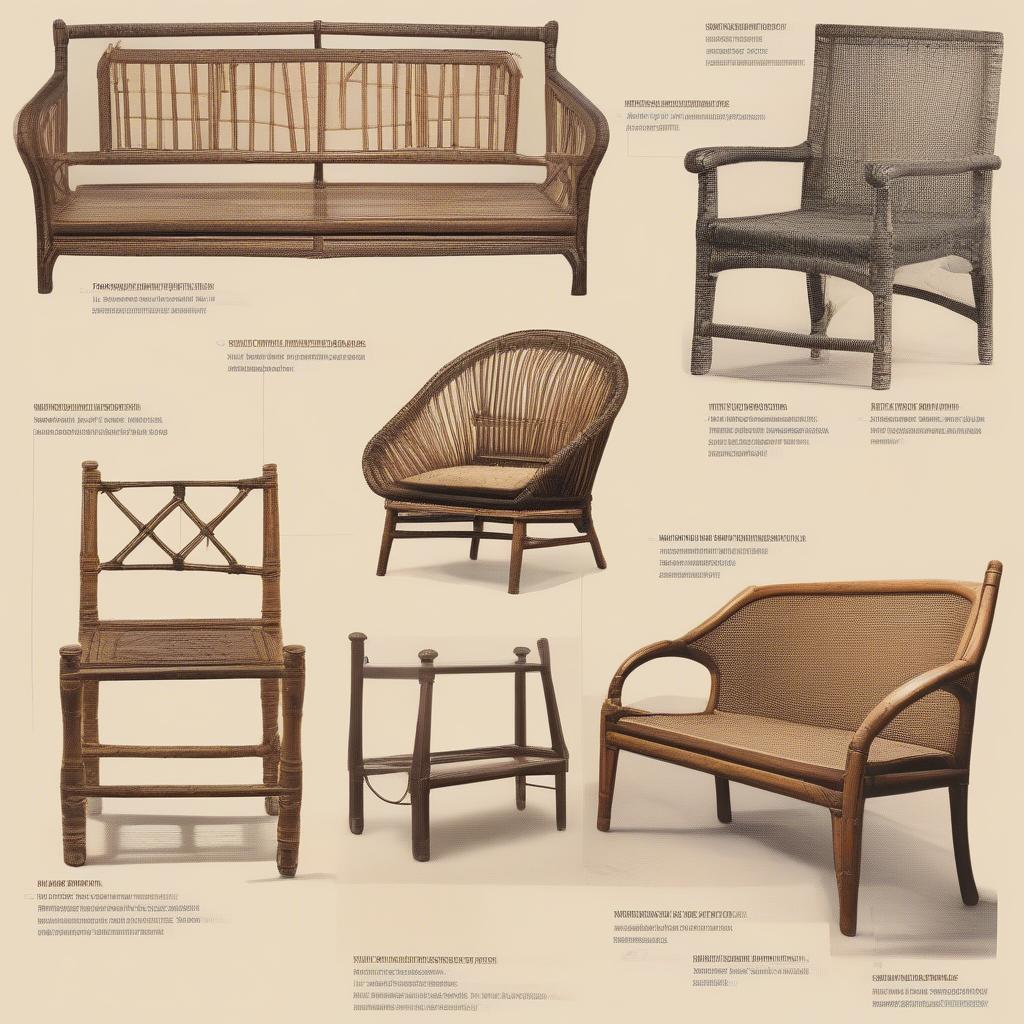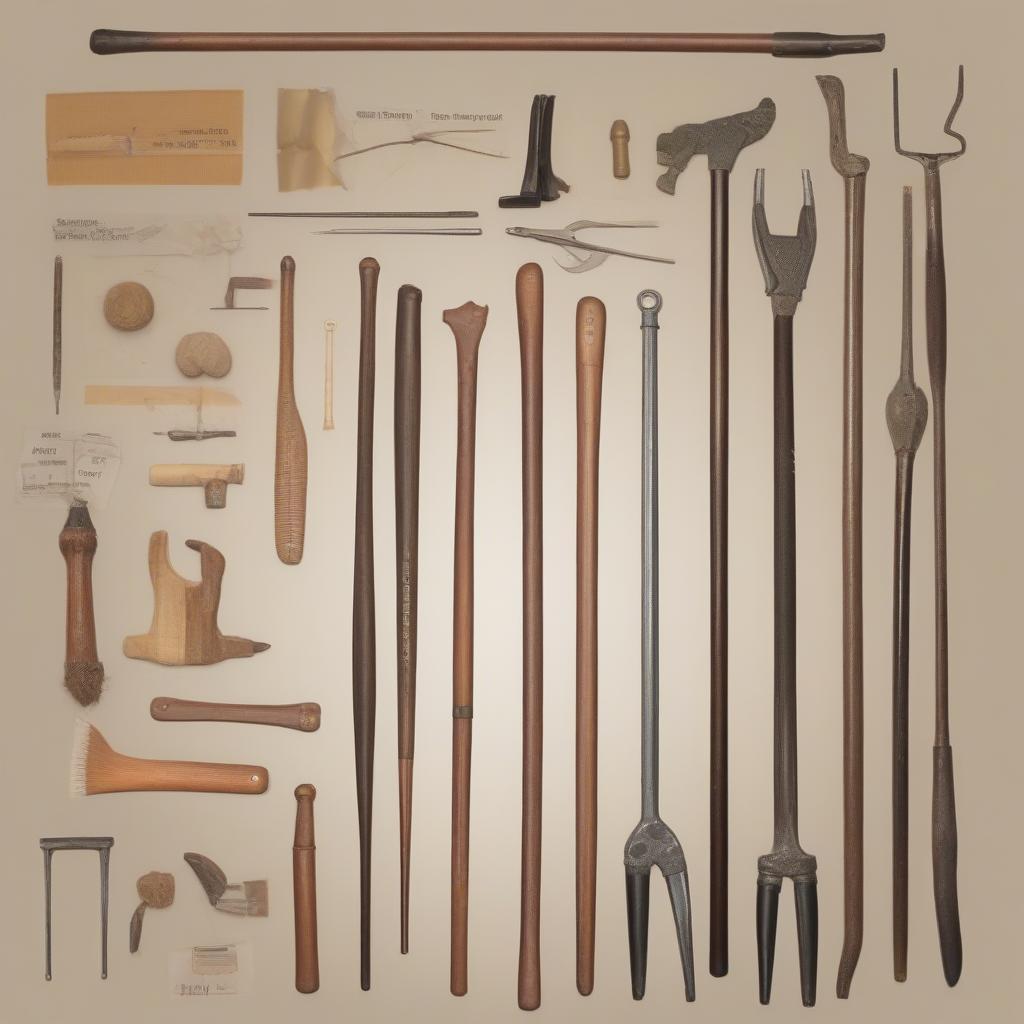Weave Chair
Mastering Cane Chair Weaving: A Comprehensive Guide
Cane Chair Weaving is a timeless craft that adds a touch of elegance and comfort to any living space. From intricate patterns to simple repairs, understanding the nuances of this craft can transform your furniture and imbue it with character. This guide will delve into the world of cane chair weaving, covering everything from the history and materials to techniques and troubleshooting.
A Brief History of Cane Chair Weaving
Cane furniture, and the art of weaving it, has a rich history dating back centuries. Early examples were primarily found in tropical and subtropical regions where rattan, a naturally occurring palm, thrives.  A historical timeline showcasing the evolution of cane chair weaving through different eras. The durability and lightweight nature of rattan made it an ideal material for furniture, and the weaving techniques developed over time resulted in intricate and beautiful designs. As trade routes expanded, so did the popularity of cane furniture, eventually becoming a staple in homes worldwide.
A historical timeline showcasing the evolution of cane chair weaving through different eras. The durability and lightweight nature of rattan made it an ideal material for furniture, and the weaving techniques developed over time resulted in intricate and beautiful designs. As trade routes expanded, so did the popularity of cane furniture, eventually becoming a staple in homes worldwide.
Understanding Cane and Other Materials
Before diving into the weaving process, it’s crucial to understand the materials involved. cane for chair weaving comes in various forms, each with its own unique properties. The most common type is pre-woven cane webbing, which is relatively easy to work with, especially for beginners. For more intricate designs, individual strands of cane are used, allowing for greater flexibility and creativity.  Various types of cane used in chair weaving, including pre-woven webbing, binder cane, and spline. Other materials used in cane chair weaving include binder cane, used to secure the edges of the webbing, and spline, a thin strip of wood used to create a groove for the cane. Choosing the right materials is essential for achieving a professional and long-lasting result.
Various types of cane used in chair weaving, including pre-woven webbing, binder cane, and spline. Other materials used in cane chair weaving include binder cane, used to secure the edges of the webbing, and spline, a thin strip of wood used to create a groove for the cane. Choosing the right materials is essential for achieving a professional and long-lasting result.
Choosing the Right Cane for Your Project
The type of cane you choose depends on the complexity of the project and your skill level. For beginners, pre-woven cane webbing is recommended. It is easy to install and provides a uniform look. More experienced weavers might opt for individual cane strands, which offer more control over the design and allow for intricate patterns.
Essential Tools for Cane Chair Weaving
Having the right tools is just as important as having the right materials. A few essential tools include a cane weaving knife, a spline cutter, a mallet, a screwdriver, and a pair of pliers.  A collection of tools used in cane chair weaving, including a cane weaving knife, spline cutter, mallet, screwdriver, and pliers. These tools help with cutting the cane, securing the spline, and ensuring a tight and even weave.
A collection of tools used in cane chair weaving, including a cane weaving knife, spline cutter, mallet, screwdriver, and pliers. These tools help with cutting the cane, securing the spline, and ensuring a tight and even weave.
The Art of Cane Chair Weaving: Step-by-Step
The process of cane chair weaving involves several steps, starting with preparing the chair frame. The old cane needs to be removed, and the frame needs to be cleaned and sanded. weaving cane chair back can be a complex process, but with practice and patience, you can achieve beautiful results. Next, the new cane webbing or individual strands are soaked in warm water to make them pliable. The damp cane is then carefully woven into the frame, using various techniques to create the desired pattern. Finally, the cane is secured, and the edges are finished with binder cane.
Weaving Techniques for Beginners
For beginners, starting with a simple checkerboard pattern is recommended. This involves weaving the cane over and under alternating strands. As you become more comfortable, you can explore more complex patterns like herringbone or diamond weaves.
Troubleshooting Common Cane Weaving Problems
Even experienced weavers encounter problems from time to time. Loose cane, broken strands, and uneven weaving are some common issues. fabric weaving a cane chair offers another approach to chair weaving. Addressing these problems promptly is essential to prevent further damage and ensure a professional finish.
“The beauty of cane weaving lies in the meticulous detail and the satisfaction of transforming a piece of furniture with your own hands,” says renowned furniture restorer, Amelia Cartwright. “It’s a craft that connects us to the past while allowing us to create something new and beautiful.”
Maintaining Your Cane Furniture
Proper maintenance is key to prolonging the life of your cane furniture. Avoid placing cane furniture in direct sunlight or damp areas. Regular dusting and occasional wiping with a damp cloth will help keep it looking its best.
weaving chair cane back can be an extremely fulfilling project. It brings new life to old furniture and connects us with a timeless craft. With patience and practice, anyone can master the art of cane chair weaving.
Conclusion
Cane chair weaving is a rewarding craft that allows you to create beautiful and functional furniture. By understanding the materials, tools, and techniques involved, you can transform your living space with unique and handcrafted pieces. Whether you are a beginner or an experienced weaver, the world of cane chair weaving offers endless possibilities for creativity and expression. Remember that practicing cane chair weaving can be a journey filled with discovery and the joy of creating something beautiful with your own hands.
FAQs
- What is the best type of cane for beginners?
- How do I remove old cane from a chair frame?
- What are the essential tools for cane chair weaving?
- How do I fix loose cane on a chair?
- Where can I find cane weaving supplies?
- What are some common cane weaving patterns?
- How do I care for my cane furniture?
“Patience and persistence are key to mastering any craft, especially cane weaving,” adds Ms. Cartwright. “Don’t be afraid to experiment and learn from your mistakes. The journey is just as rewarding as the final product.”
chair weaving repair hyderabad offers specialized repair services. If you have any questions or need assistance, please feel free to contact us. We are here to help you on your cane weaving journey.
Need support? Contact our Hotline: +84 388 951 999, or visit us in Hanoi, Vietnam, or Tech Avenue, Suite 12, San Francisco, CA 94105, USA. We offer 24/7 customer service.
